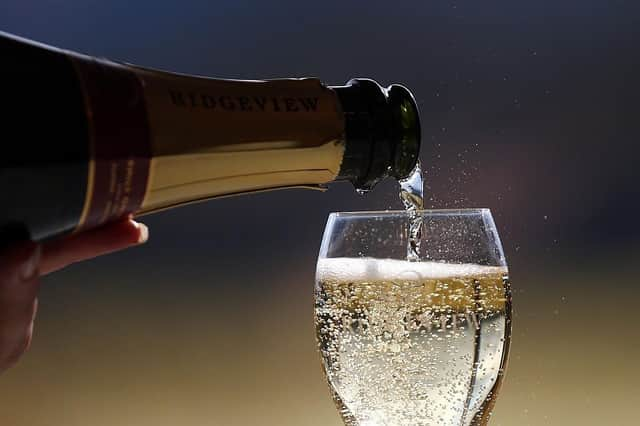Scotland - The Drink Debate: How other countries regulate alcohol advertising


Instead, the iconic Tennent’s lager logo was replaced with a blank, sponsorless, strip.
"It’s pretty common, France introduced the ‘Loi Evin’ (Evin Law) in the early 1990s,” says European Alcohol Policy Alliance president Dr Peter Rice - referencing the law which largely outlawed alcohol advertising. “They were very worried about alcohol harm. And it has actually done very well in reducing that. There are many countries around the world where alcohol promotion is not a common thing. It often surprises people.”
Advertisement
Hide AdAdvertisement
Hide AdCountries which do not allow alcohol to be marketed during sports matches include Ireland and Uzbekistan, as well as France. If recommendations currently put forward for consultation by the Scottish Government are approved, Scotland could join them.


"In Scotland, currently, the alcohol industry’s own guidelines say that adverts should not suggest that alcohol enhances sporting performance or leads to sporting success,” says Dr Rice. “That’s written in their own guidelines. Yet your football team can run out with a beer logo on the back of their shirts.”
Under the proposals, the Scottish Government could prohibit alcohol-branded sports merchandise, including sponsorship on replica kits and ban alcohol advertising at any sports match which could have children in the audience.
Other parts of the controversial proposals include the prohibition of alcohol advertising in public spaces, limiting the visibility of alcohol in stores and restricting alcohol-branded merchandise. The proposals also ask stakeholders about whether alcohol ads should be banned on TV, or only shown after a watershed.
France, known for its love of good wine with high quality food, was one of the first countries to introduce stringent rules against widespread alcohol marketing.
There is no alcohol advertising on television, in addition to the sports field ban, while, all adverts have to carry health information about the dangers of drinking.
“People think ‘Oh, south Europeans, they’ve got it all figured out, they can be very relaxed about it [alcohol] and don’t get any trouble," says Dr Rice. ”But France was very concerned about people in their 40s, 50s and 60s dying of liver disease and they’ve done a whole bunch of things to turn that around.”
He believes Scotland’s current regulation around alcohol is regarded as lax compared to other countries.
Advertisement
Hide AdAdvertisement
Hide Ad"I think it would be true to say that people coming to Scotland and the UK are struck about the lack of regulation [compared to other countries],” he says. "Other countries do have a much greater level of restriction on marketing.”
He recalls a time when he was speaking at a conference in New Zealand, where spirits are not sold in regular supermarkets.
"A colleague said to me, ‘So, in Scotland, you can just walk into grocery store and buy a bottle of vodka?’ and I said yes. They found it astonishing.”
In Ireland, recent proposals to display warnings on bottles of alcohol which are akin to those currently on cigarette packets in Scotland, are set to go ahead.
The rotating labels will display warnings about alcohol-related liver disease, cancer and risks of drinking during pregnancy.
Two years ago the Irish government banned marketing in public parks or public transport, as well as within 200 metres of a school or children’s institution. In shops, the alcohol section is separated from the rest of the store.
"That’s to do with trying to limit children’s brand awareness,” says Dr Rice. “Unless you actively want to go in to buy alcohol, you don’t see it displayed.”
In many countries, alcohol is still exempt from even having to display basic nutritional information such as calories and carbohydrates. Ireland’s reforms will change that.
Advertisement
Hide AdAdvertisement
Hide Ad“I think this is symptomatic of an industry that gets special treatment,” says Dr Rice. “We're working on that across across Europe, to try to get alcohol brought into line with that you'd have for other products on the shelves.”
In the Nordic countries of Iceland and Norway, regulation on alcohol marketing has been around almost longer than the concept of marketing itself.
Lauri Beekmann, director of the Nordic Drug and Alcohol Policy Alliance, points to a law introduced in Iceland in 1928, which essentially prohibited advertising of alcohol, while Norway brought in its own rules after alcohol returned to the country following a period of prohibition almost a century ago.
"These policies have undergone some changes, but they have generally retained their key principles,” he says. “The Nordic countries have a unique traditional alcohol policy that places public health above economic interests. This comprehensive alcohol policy includes a restrictive attitude towards alcohol marketing.”
“When the focus of alcohol policy is centred on public health and societal well-being, the recent scientific evidence linking alcohol to cancer and the increased understanding of the harm caused by prenatal alcohol exposure, make it evident that alcohol is not an ordinary commodity that should be promoted and portrayed in all aspects of life, especially since it is often marketed in an attractive way to young people. This leads to the logical conclusion that alcohol should not be promoted in a way that suggests it is a desirable product.”
Mr Beekmann points out that despite a history of high levels of binge drinking in Nordic countries, similar to that of Scotland, Norway and Iceland have the lowest drinking levels in Europe, while Sweden and Finland have consumption levels that are below the European average. Denmark, however, which does not follow the path of other Nordic countries, has the highest alcohol consumption rates among young people in the European Union.
Baltic countries have followed their Nordic neighbours in recent times to tighten up their laws. At the end of the last decade, Lithuania became the first EU member country to introduce a total ban on alcohol advertising, along with raising the legal drinking age to 20 and implementing strong tax increases, among other measures. Meanwhile, in Estonia, only the product can be shown in ads, without any accompanying imagery of people or lifestyle - while the country also bans all alcohol advertising in public places.
Similarly, Russia, once synonymous with the drinking of vodka, has successfully cut alcohol deaths in recent years, following a ban on advertising and the scrapping of street kiosks with easy access to spirits.
Advertisement
Hide AdAdvertisement
Hide Ad"The Baltic countries have previously had the highest levels of alcohol consumption worldwide, with Lithuania ranking first only a few years ago, says Mr Beekmann. “However, following significant changes in alcohol policy, Lithuania has reduced consumption by three litres per capita in just a few years.”
Despite the concern, some countries have still taken an opposite tack.
Japan last year launched a nationwide competition calling for ideas to encourage people to drink more alcohol – specifically its national drinks, sake – after tax revenues fell following a reduction in drinking among younger people. The Sake Viva! campaign asked 20- to 39-year-olds to devise proposals to help revitalise the popularity of alcoholic drinks.